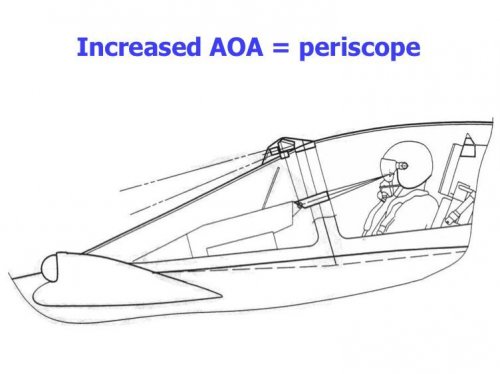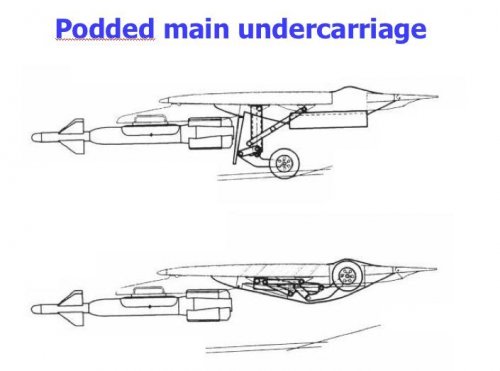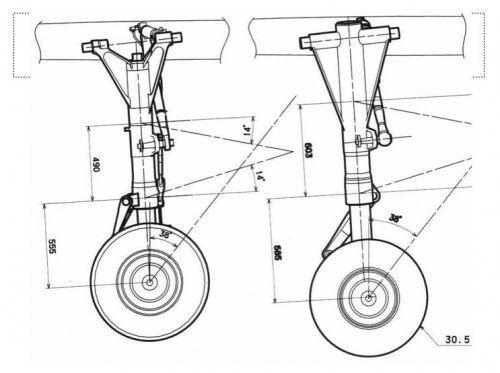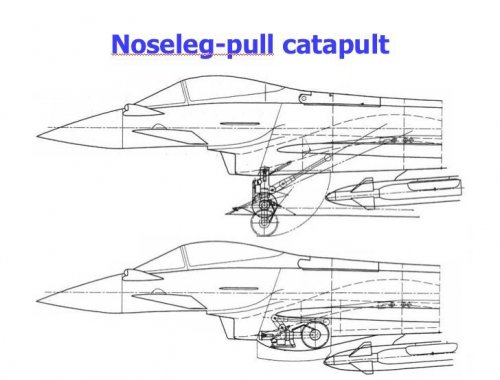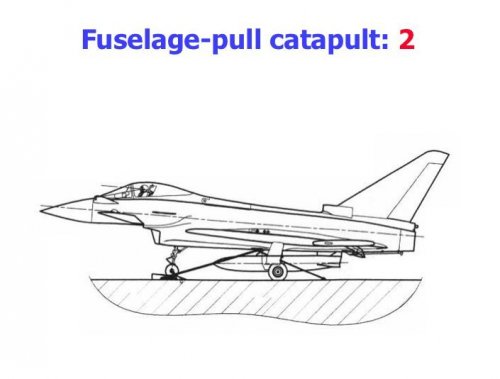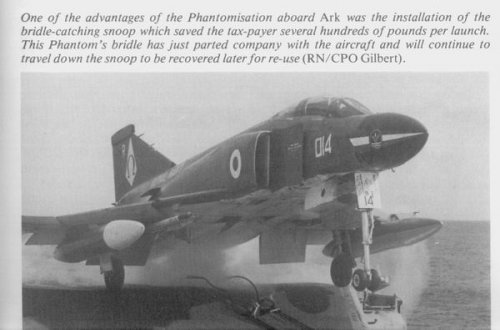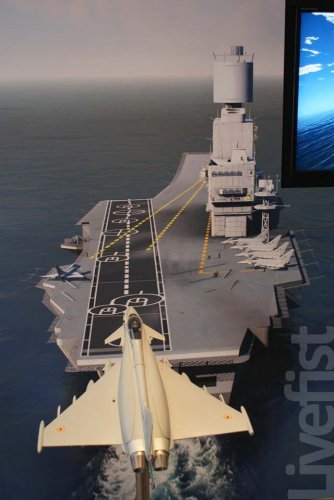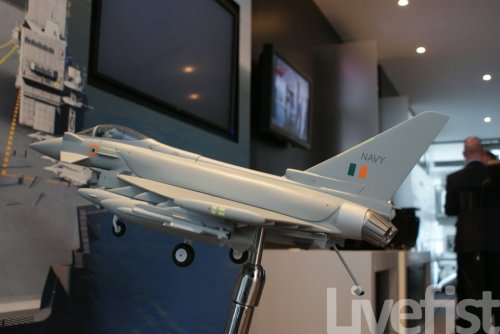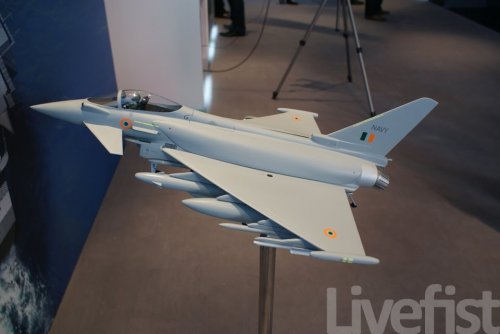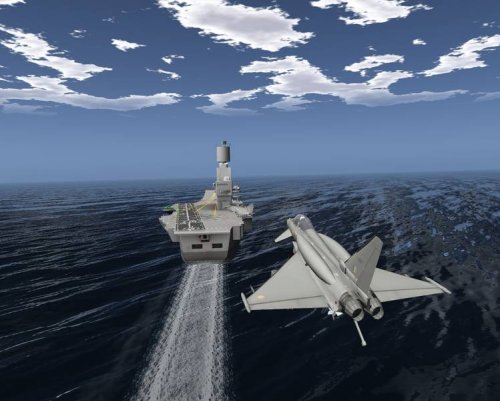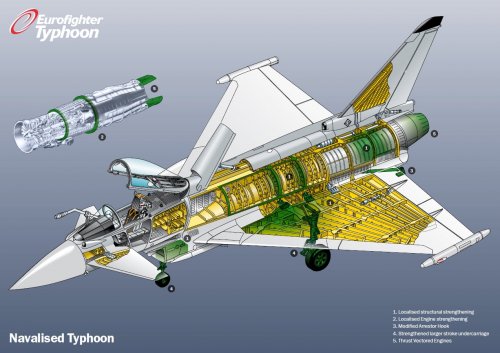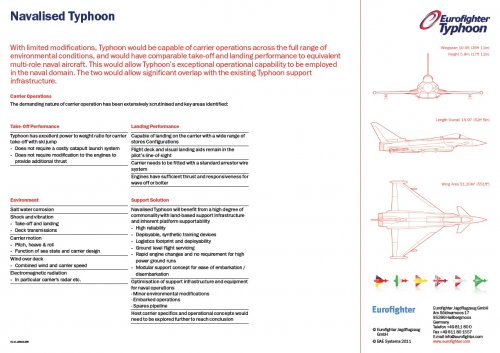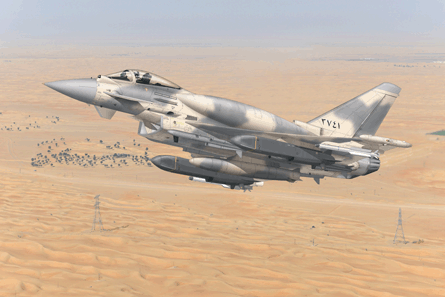- Joined
- 3 January 2006
- Messages
- 1,223
- Reaction score
- 941
Jackonicko said:This may well be bollocks and sloppy journalism, though I understand that the Typhoon (N) “is not dead” and that the studies are still being looked at and kept under review.
The option of a ‘marinised’ Typhoon has been studied several times, first as the only STOBAR aircraft type to be considered by the original FCBA/JCA studies.
Early pre-feasibility studies of a Eurofighter Typhoon (N) (using the possible service name - Sea Typhoon) were undertaken in early 1996 by British Aerospace's Military Aircraft and Aerostructures. (BAE Systems initially suggested that costly airframe strengthening and a new undercarriage for Typhoon (N), as traditionally required for the ‘navalisation’ of a land based aircraft, could be avoided by using sophisticated computer controlled precise landing systems and other aids to reduce arrested landing stresses to within existing Typhoon limits. These ideas were not accepted by the MOD, however, and a fully navalised STOBAR Typhoon was drawn up).
A further 27 month contract was let in 1997 to study both catapult-launched (CTOL) and STOBAR variants in more detail.
Both variants would have required a large conventional aircraft carrier with an angled flight deck and arrester wires.
Both featured a strengthened undercarriage and an arrestor hook, and consideration was given to providing a larger thicker wing with power folding and more powerful vectored thrust EJ200 engines.
In May 2001 Sir Robert Walmsley, Head of the Defence Procurement Agency, dismissed the possibility of a navalised Eurofighter pointing out that Typhoon was "not currently designed so that it could use a carrier. We could change the design but we would be faced with a huge piece of work. The materials would probably have to be changed in order to avoid corrosion; the weight of the undercarriage would have to be doubled to support carrier landing which would eat into the payload margin; and the wing roots would have to be strengthened in order to take the full inertia forces on landing. That sounds to me like a very substantial redesign. It is always possible, but it would cost a huge amount of money and it would certainly add very considerably to the cost of the aircraft.”
There had also been fears that the flight deck clearance of external weapons would be dangerously low for the robust nature of carrier launch and landing events, and that the canards would dangerously restrict the pilots view during high angle of attack carrier landings. These fears were dismissed after studies.
Walmsley’s conclusions were not shared by those who’d undertaken the studies, and the possibility of a navalised Typhoon re-emerged in late 2005, as a "Plan B" in the event of a JSF cancellation.
BAE engineers had concluded that navalising Typhoon appeared to be "practical and relatively inexpensive", and that navalising later RAF tranches "might be of interest". The view over the nose was not necessarily inadequate and there were a number of options for reducing sink rate. Of these only the increased angle of attack option would would require the addition of a pilot periscope or a higher seat position and higher canopy roofline.
The studies indicated a 340 kg weight increase for the STOBAR version, and 460 kg for the CTOL catapult launched variant.
STOBAR was considered preferable to CTOL, flight control system changes would be necessary to guarantee "precision landings" but there would be little change to structural layout, and there would certainly be no need for a major rework for the aircraft to survive arrested landings.
The Typhoon’s advanced flight-control system could be programmed to reduce the stresses of landing, particularly if integrated with a carrier-landing datalink. This would have a number of advantages. For instance, sudden pitching of the carrier deck would be recognised by the system, which would feed in last-second control corrections, ensuring that the aircraft landed within set limits. This would permit the airframe to be strengthened only as required for operations within those parameters.
Thrust vectoring, already being planned for the Typhoon, coupled with a high-lift wing design, could provide near-optimal short-takeoff-and-landing capabilities for a ‘Sea Typhoon.’ The use of a ski ramp would only enhance STOL performance.
As an alternative to JSF, it was claimed that Typhoon (N) would offer higher speed, range and payload, although it would be less stealthy. A Typhoon (N) would also have the advantage of considerable commonality with the 232 Eurofighter Typhoon's already planned for the RAF – if, indeed, the third Tranche was not completed in a Typhoon (N) configuration.
The UK was not the only potential customer for a navalised Typhoon, Eurofighter GmbH briefed the Italian Navy during 2000 about a low-cost, reduced weight, arrestor landing/angled deck variant of the while the company offered ‘another customer’ (probably India) a “more radically modified naval version of the aircraft”, presumably the STOBAR variant studied for the UK.
http://www.pprune.org/military-aircrew/285968-aircraft-carriers-may-use-typhoon.html#post3445721
The last drawing showing a Eurofighter with a bridle type catapult, which certainly circumvents more than a few forward fusealage structural issues associate with the tow-bar, although it does look a bit anachronistic?
I can only assume that the original source for the drawings was BAE Systems?

